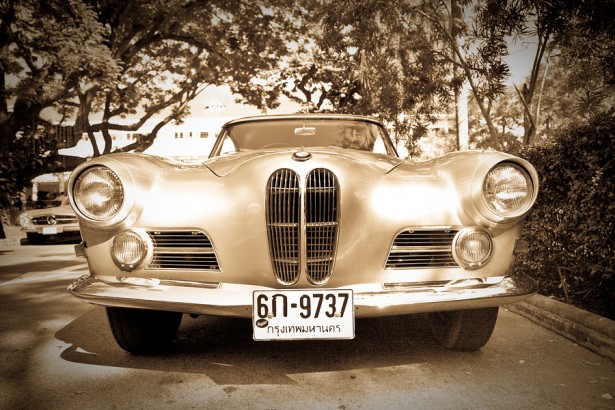This week, a collection of nine vintage muscle cars netted approximately $2.5 million in less than 60 minutes. Late last month, a 1962 Ferrari 250 GTO Berlinetta sold for $38.1 million at the Bonhams Quail Lodge auction in Carmel, California – this is 28 percent higher than the Mercedes-Benz race car that sold for $29.7 million last summer.
With all of these record high prices for classic automobiles, new money floating around the economy and immense speculation, is this a carbon copy of the housing market a few years ago? In other words, are consumers in the midst of a brand new bubble?
Last year, research from Knight Frank’s second-quarter 2013 luxury investment index (KFLII) saw price growth in the classic car market help increase the fund by seven percent. Furthermore, this increase matched the rise in the value of central London’s residential property market.

The research further found:
“Looking at the individual asset classes represented within KFLII, there has been a wide variation in performance over the long and short term. Across every time period classic cars, according to the HAGI Top index, have shown the strongest growth, rising 21 percent over the past six months and a remarkable 430 percent over 10 years – better even than gold.”
It presented a chart analyzing the performances of various assets, such as antique furniture, art and stamps, which discovered either modest growth or substantial declines in the 12 months from Aug. 2012 to Aug. 2013. However, the only asset that jumped considerably was vintage cars.
“It’s an asset class that’s very rare and it’s very aspirational,” said Andrew Shirley, editor of the report, in an interview with Reuters. “A lot of Asian high net worth individuals have acquired classic cars…They keep them in their garage in the UK or Europe and they come over and drive them in rallies.”
Insurance companies are even offering classic car coverage now.
Others would also contest that it’s the money-pumping by the central banks across the globe that is floating to the more affluent in society. Many of these same individuals often allude to the art market as a sign that inflation is here – Cezanne’s “Card Players” sold for $259 million in 2011.
“The effects of the massive monetary inflation of recent years are so far mainly reflected in asset prices. Modern art has become a major magnet for investors, whereby one gets the impression that this is truly a gargantuan bubble by now,” wrote Zero Hedge late last year. “So if you ever wonder whether there is really an inflationary bubble underway, the answer is clearly, yes, there is.”
The Institute of the Motor Industry published an article authored by Jon Pressnell, who dismissed the notions that there is a bubble in the classic car market. Essentially, his argument was that today’s buyers of vintage automobiles are likely to be seasoned veterans, who have the money as well as the knowledge of old cars, and not speculators helping inflate a bubble.
He believes that the price of classic cars will remain relatively high, but not artificially, and then experience a slight decline in about five years: “Purchasers now appear to be looking at cars for what they are rather than as an investment opportunity, the market is knowledge-led. So less fashionable classics are not indiscriminately priced at unrealistic levels. If enthusiasts are content with less-than-best, or prepared to spend money on improving a car’s condition, then bargains are still to be found.”
Whatever the case is, an owner of a vintage automobile will likely spend a lot of money on maintenance to prevent corrosion, or they can never drive it for fears of an accident and then spending a large sum of money on importing parts.



